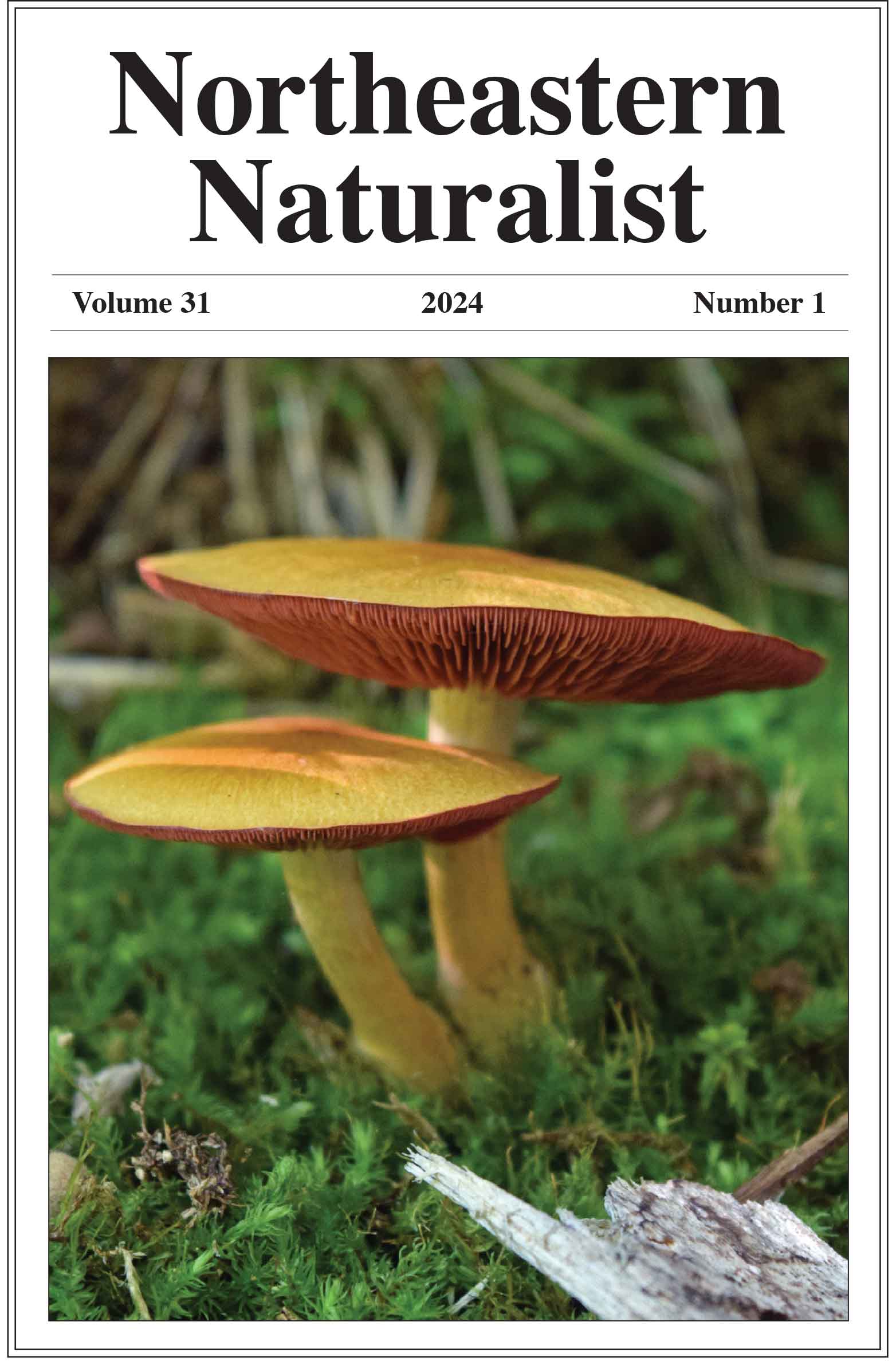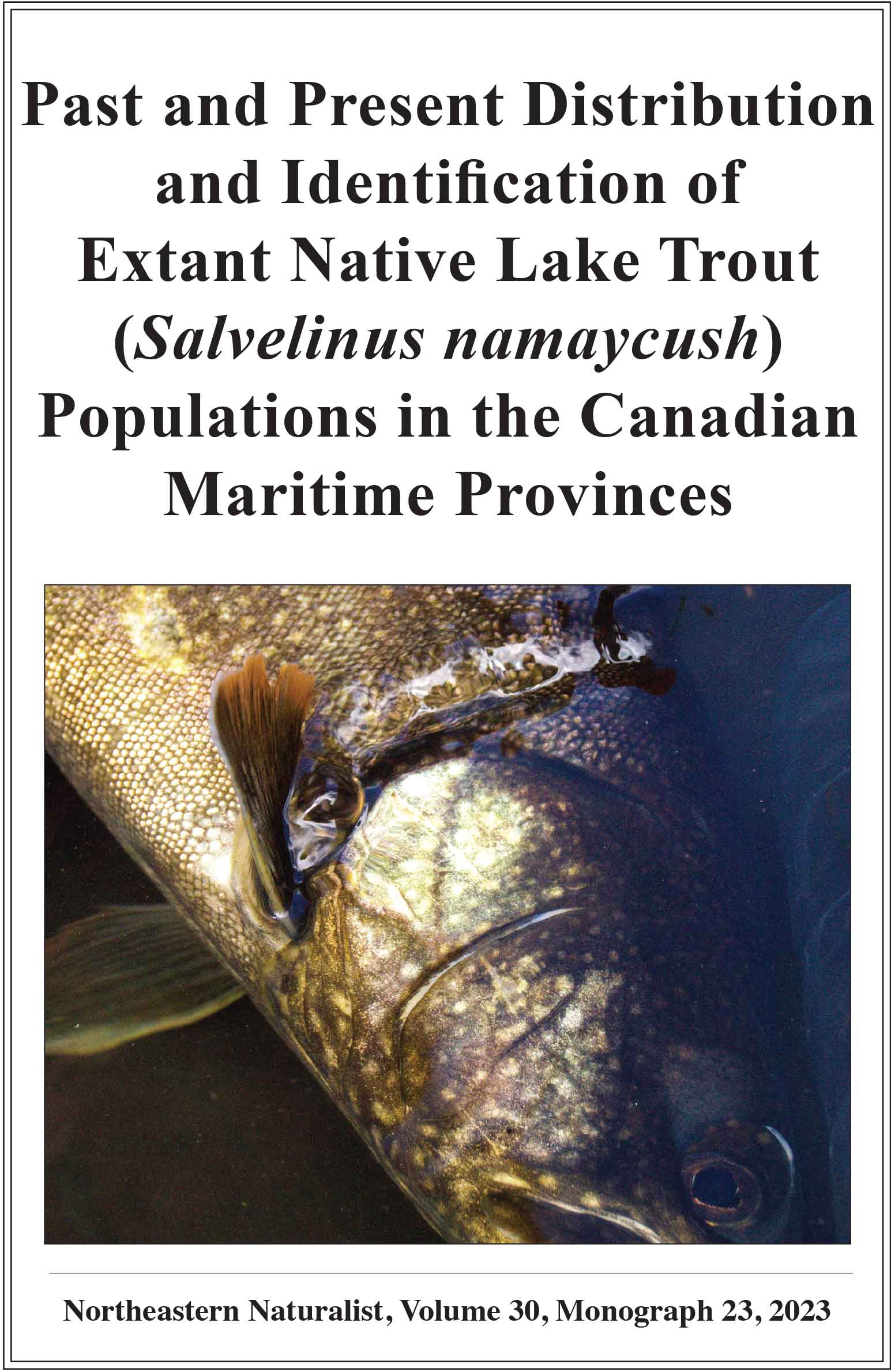Changes in the Migration Phenology of Massachusetts Birds 1940–2013 in Relation to Temperatures along the Atlantic Flyway
Caitlin M. Cunningham1, Jason D. Luscier2, Erica A. Mackey2,3, Corey A. Palmer2,4, Daniel R. Bolster2,5, Anna L. Valentine2,6, and Donald A. McCrimmon Jr.2,*
1School of Biology and Ecology, University of Maine, ME, 04469. 2Ecology and Environmental Sciences Program, University of Maine, ME, 04469. 3Current address - Department of Environmental Science and Ecology, SUNY College at Brockport, Brockport, NY 14420. 4Current address - Department of Geosciences, University of Massachusetts, Amherst, MA 01003. 5Current address - Department of Natural Resources, University of New Hampshire, Durham, NH 03824. 6Current address - 6 Carriage House Lane, Rochester, NY 14624. *Corresponding author.
Northeastern Naturalist, Volume 27, Issue 3 (2020): 448–468
Abstract
Climate variables affect the phenology of bird migration, and anthropogenic climate change has likely resulted in shifts in these phenological patterns. Warmer springtime temperatures could lead to birds arriving earlier to northerly latitudes in North America. We modeled the effect of temperature with 74 years of data on first arrival for 84 bird species in Worcester County, MA. We found migratory bird species have shifted their arrival to Worcester County an average of 0.11 days per year earlier, with short-distance migrants having stronger shifts (an average of 0.18 days earlier per year) than long-distance migrants (an average of 0.06 days earlier per year). Our results add to a body of literature regarding the potential impacts of climate change on bird migration phenology. We supply support for the notion that some species are temporally shifting their migration in response to warming springtime temperatures. These shifts may be mismatched with resource availability and thus could negatively affect populations and communities. Consequently, it is important to understand patterns in bird migration phenology in order to inform adequate conservation strategies.
![]() Download Full-text pdf (Accessible only to subscribers. To subscribe click here.)
Download Full-text pdf (Accessible only to subscribers. To subscribe click here.)
Access Journal Content
Open access browsing of table of contents and abstract pages. Full text pdfs available for download for subscribers.
Issue-in-Progress: Vol. 31 (2) ... early view
Check out NENA's latest Monograph:












 The Northeastern Naturalist is a peer-reviewed journal that covers all aspects of natural history within northeastern North America. We welcome research articles, summary review papers, and observational notes.
The Northeastern Naturalist is a peer-reviewed journal that covers all aspects of natural history within northeastern North America. We welcome research articles, summary review papers, and observational notes.